Compression molding: New materials and markets
From multifunctional aircraft interiors to compounds using continuous fabrics to the growing use of recycled carbon fiber – compression molding offers new opportunities.
Compression molding has been used for decades for both thermosets (SMC) and thermoplastics (GMT and thermoplastic prepregs), but a spate of new developments has extended its reach, enabling composite parts that meet the growing demand for less waste, shorter cycle times and increased multifunctionality and sustainability.
This Hybrid SMC A350 door frame lining (TRL 6) reduces part cost and manufacturing lead time by more than 50% vs. previous honeycomb/glass-phenolic prepreg sandwich. Source: CTC Stade.
Hybrid SMC
As highlighted in this month’s feature: “CW Plant Tour: Composites Technology Center”, SMC is being reinvented by Airbus and the Composites Technology Center (CTC) in Stade, Germany. Current composite aircraft interior components often use glass fiber/phenolic sandwich construction, characterized by low buy-to-fly material usage, high cycle times and extensive rework/finishing. CTC wanted to address these issues, but also to enable more complexity and function, for example, integration of wire clips, attachment interfaces, circuitry, fasteners, coloring and different surfaces. Thus, CTC has combined thermoset, short-fiber SMC with preimpregnated, tailored continuous fiber reinforcements in a single-stage compression molding process. This is very similar to a process demonstrated with thermoplastic materials in the CAMISMA project.

Hybrid SMC combines short fiber compounds with continuous fiber prepregs and single-stage compression molding to produce lightweight, complex and integrated parts for aircraft cabin, cargo and secondary structure applications. SOURCE: CTC Stade.
The Hybrid SMC technology is described by CTC researcher Marc Fette in a Nov 2015 Composites at Lake Louise (Alberta, Canada) presentation and a 2016 paper titled, “Automated and Cost-efficient Production of Hybrid Sheet Moulding Compound Aircraft Components”. (There is also a SAMPE 2016 paper on new cargo and cabin applications.) This research was completed in partnership with Airbus, LaFT / Helmut-Schmidt-University (Hamburg, Germany) and Polynt Composites Germany GmbH (Miehlen, Germany). This team developed a new flame-retardant SMC for aerospace applications, which Polynt presented at the 15th European Meeting on Fire Retardancy and Protection of Materials (FRPM15, Jun 21-25, 2015 in Berlin, Germany). This material was qualified by Airbus Operations GmbH (Hamburg, Germany) and served as a basis for CTC’s development of Hybrid SMC.
CTC has discussed results from testing two SMC products: HUP 63/25 GF reinforced with chopped glass fiber and HUP 27/25 CF using carbon fibers. Both products are made with unsaturated polyester resin that meets flame, smoke and toxicity (FST) requirements for aircraft interiors. In Hybrid SMC parts, the short fiber properties are augmented by placing preimpregnated continuous woven or unidirectional fabrics along high-load paths. Alternatively, tailored fiber placement (TFP) patches can be used (see “Tailored Fiber Placement: Besting metal in volume production” ). These absorb the major forces while the SMC enables complex geometry, including integrated ribs, interfaces and attachment points (e.g. cable holders) as well as metallic fasteners and inserts.
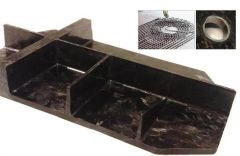
|
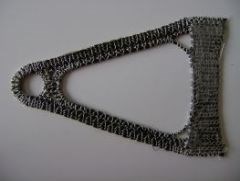
|
Short-fiber SMC enables complex shapes and inclusion of metal inserts, while continuous fiber reinforcements, such as prepreg tapes or tailored fiber placement (TFP) patches (right), increase load-bearing capability and lightweight structural performance. SOURCE: Marc Fette and CTC Stade.
Hybrid SMC parts can be cured in 120-180 seconds at 145-155°C in a compression molding press. The resulting parts achieve a high freedom of design and high material usage rate of 90%, relatively low material costs for aircraft applications and a high level of automation (LoA). Recycled carbon fiber veils may be used in the SMC, as has been demonstrated by BMW for automotive production and by CTC for aircraft interior and cargo applications (see “Recycling carbon fiber for structural applications”). Polynt Composites Germany and CTC have also developed recycled carbon fiber SMC for aircraft applications, which Polynt markets as RECarbon products.
Recycled CF Molding Compounds
There is another method of using recycled carbon fiber in molding compounds that is gaining momentum worldwide. In this method, scrap prepreg is cut into chips and formed into a compound that can also be readily molded with a compression molding press. I believe this technology holds a lot of promise, both as an alternative method for recycling composite manufacturing waste and also as a new aesthetic. This “new carbon look” has been featured in everything from golf clubs to motorcycles to high-end sports cars.

|
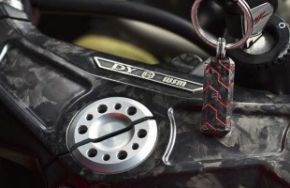
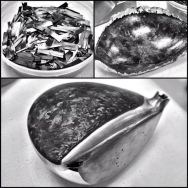
|
The look of parts made from carbon fiber molding compound is gaining popularity:
Lamborghini Huracan and Aston Martin DB11 (top),
David Yurman Forged Carbon Moto by Walt Siegl Motorcycles with help from Clear Carbon Composites (bottom left) and Callaway Golf’s RAZR Fit driver (bottom right).
SOURCE: Van Wees, David Yurman and Callaway Golf.
NOTE: The Lamborghini Huracan and Callaway RAZR use A. Schulman's Quantam AMC 8593 chopped fiber/vinylester compound. The Aston Martin DB11 uses Polynt SMCarbon 90 CF60-12K (see brochure p. 11).
Personally, I think the look of the recycled prepreg materials is even more impressive, mainly because it offers more depth and also variety based on how the chips are cut. CW featured these recycled molding compounds in our 2016 Future Materials exhibit at the Intl. BoatBuilders Exhibition (IBEX, Tampa, FL, US). I also saw a presentation at the 2016 CFK Valley Stade Conference (Jun 15-16, Stade, Germany) by Rien van den Aker of Van Wees UD and Crossply Technology BV (Tilburg, the Netherlands). He discussed use of UD chips, production waste from cutting tailored prepreg blanks into shapes, which was then converted into a moldable material. The chips are irregular shapes less than 50mm by 50mm with good formability.
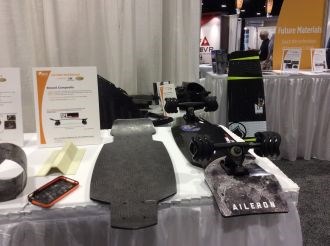
|
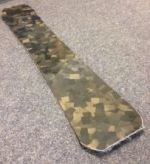
|
The 2016 Future Materials exhibit at IBEX featured a cell phone case and other objects made from USC’s Strand Composite, as well as a skateboard deck made by 121c (left) and a snowboard blank made from Flake SMC by CTC Stade. SOURCE: CW and CTC Stade.
Dr. Steven Nutt, MC Gill Professor of Chemical Engineering and Materials Science at the University of Southern California (USC, Los Angeles, CA, US) also sees great potential in this technology. “We started working on this through an NSF grant as part of a G7 (then G8) initiative for increasing materials efficiency and sustainable manufacturing,” says Nutt. “One of the project’s tasks was to look at how to reuse prepreg scrap. We began experimenting with cutting the scraps into chips and then compression molding those into a prepreg-like intermediate sheet.” Nutt and Gaurav Nilakantan gave a presentation on their work at CAMX 2014 and published the 2015 paper “Reuse and upcycling of aerospace prepreg scrap and waste”. The technology has also been used by USC spin off 121c, which makes carbon fiber skateboards (very cool ones, I might add).
“The skeletons generated from automating cutting tables are easy to use in this process,” says Nutt. “The issue is how to convert the scrap at a price point that is attractive to the market vs. virgin material compounds. One of the big needs we see is how to automate the chip cutting process. Another area is dosing, or how to distribute the chips to avoid lumps and maintain consistent flatness.” Nutt sees possible answers in the lumber industry oriented strand board (OSB). “This is very much like what we’re trying to do. Interestingly, one of the world leaders in this technology is Dieffenbacher, a company that also leads in composites processing.”

|
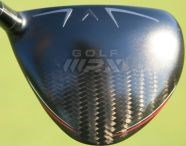
|

|
Callaway’s Big Bertha Fusion drivers and fairway woods (right) golf clubs use A. Schulman’s new Forged Preg continuous carbon fiber SMC. SOURCE: Golfwrx.com.
Continuous Fabric Compounds
A. Schulman (now LyondellBasell) has introduced Quantum Forged Preg, a quasi-isotropic vinylester (VE) molding compound using continuous carbon fiber fabrics. Available as a triaxial, biaxial or unidirectional product, Quantum Forged Preg offers 2-3X the tensile strength and 30-200% higher flex strength vs. chopped carbon fiber/VE compounds. As I explained in my CAMX 2016 recap, this is just one of a full line of compression molding materials that A. Schulman now offers, spanning thermosets and thermoplastics. The company will also open a new customer development center in Bay City, Michigan this summer. “The idea is to speed our customer’s product development cycles by having representatives from all of our expertise areas available in one place,” explains Doug Gries, A. Schulman’s market development director for Engineered Composites. “So when the materials expert suggests a modification, the manufacturing resource is right there to discuss how that impacts processing and what parameter changes might be needed.” Another benefit, according to Gries, is that this expertise is material agnostic. “We offer both thermosets and thermoplastics, SMC and bulk molding compounds and we also have expertise in both injection molding and compression molding. Many people think you can’t achieve really detailed ribs and fine structures without injection molding, but we achieve it all the time with compression molding as well.”
Related Content
Cryo-compressed hydrogen, the best solution for storage and refueling stations?
Cryomotive’s CRYOGAS solution claims the highest storage density, lowest refueling cost and widest operating range without H2 losses while using one-fifth the carbon fiber required in compressed gas tanks.
Read MoreComposites manufacturing for general aviation aircraft
General aviation, certified and experimental, has increasingly embraced composites over the decades, a path further driven by leveraged innovation in materials and processes and the evolving AAM market.
Read MoreTU Munich develops cuboidal conformable tanks using carbon fiber composites for increased hydrogen storage
Flat tank enabling standard platform for BEV and FCEV uses thermoplastic and thermoset composites, overwrapped skeleton design in pursuit of 25% more H2 storage.
Read MoreInfinite Composites: Type V tanks for space, hydrogen, automotive and more
After a decade of proving its linerless, weight-saving composite tanks with NASA and more than 30 aerospace companies, this CryoSphere pioneer is scaling for growth in commercial space and sustainable transportation on Earth.
Read MoreRead Next
“Structured air” TPS safeguards composite structures
Powered by an 85% air/15% pure polyimide aerogel, Blueshift’s novel material system protects structures during transient thermal events from -200°C to beyond 2400°C for rockets, battery boxes and more.
Read MoreAll-recycled, needle-punched nonwoven CFRP slashes carbon footprint of Formula 2 seat
Dallara and Tenowo collaborate to produce a race-ready Formula 2 seat using recycled carbon fiber, reducing CO2 emissions by 97.5% compared to virgin materials.
Read MoreVIDEO: High-volume processing for fiberglass components
Cannon Ergos, a company specializing in high-ton presses and equipment for composites fabrication and plastics processing, displayed automotive and industrial components at CAMX 2024.
Read More





















